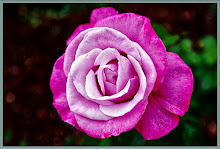 On, 16 September 2009, I visited the Page Museum located at the Rancho La Brea Tar Pits in the heart of Los Angeles. The Museum is one of the world’s most famous fossil localities, recognized for having the largest and most diverse assemblage of extinct Ice Age plants and animals in the world. Visitors can learn about Los Angeles as it was between 10,000 and 40,000 years ago, during the last Ice Age, when animals such as saber-toothed cats and mammoths roamed the Los Angeles Basin. Through windows at the Page Museum Laboratory, visitors can watch bones being cleaned and repaired. Outside the Museum, in Hancock Park, life-size replicas of several extinct mammals are featured.
On, 16 September 2009, I visited the Page Museum located at the Rancho La Brea Tar Pits in the heart of Los Angeles. The Museum is one of the world’s most famous fossil localities, recognized for having the largest and most diverse assemblage of extinct Ice Age plants and animals in the world. Visitors can learn about Los Angeles as it was between 10,000 and 40,000 years ago, during the last Ice Age, when animals such as saber-toothed cats and mammoths roamed the Los Angeles Basin. Through windows at the Page Museum Laboratory, visitors can watch bones being cleaned and repaired. Outside the Museum, in Hancock Park, life-size replicas of several extinct mammals are featured.I made the mistake of shooting most of the pictures at ISO 3200 when it
 was not needed. I never used an ISO setting this high (1600 was my previous high) and I wanted to try it out. I have Good news and bad news. The D700 performed flawlessly and very clean. However, ISO 3200 is so sensitive that many of highlights were blown because of the spot lighting reflecting on the subjects. The reflections were not that obvious. Now, I know.
was not needed. I never used an ISO setting this high (1600 was my previous high) and I wanted to try it out. I have Good news and bad news. The D700 performed flawlessly and very clean. However, ISO 3200 is so sensitive that many of highlights were blown because of the spot lighting reflecting on the subjects. The reflections were not that obvious. Now, I know.Photos of the Page Museum (La Brea Tar Pits)


